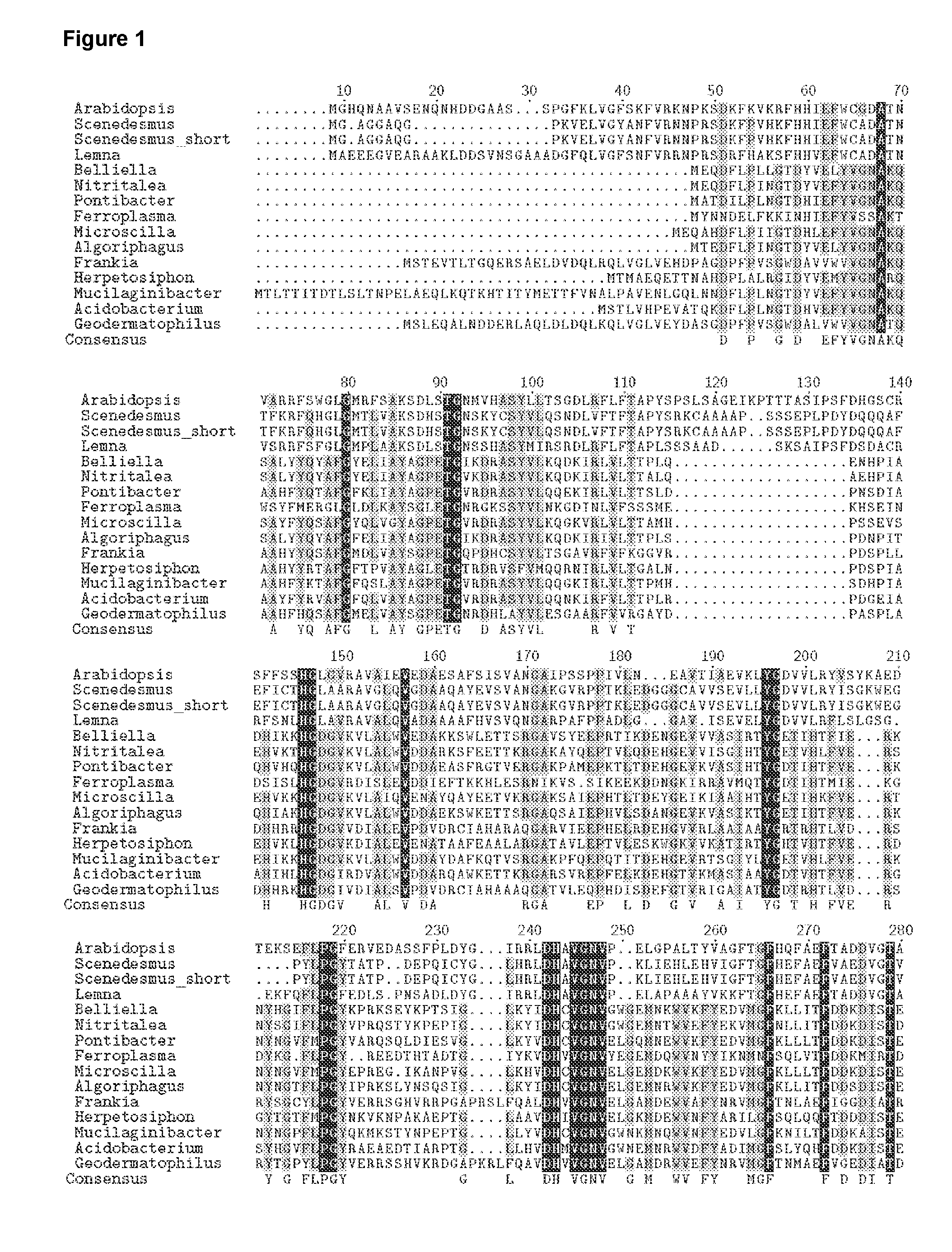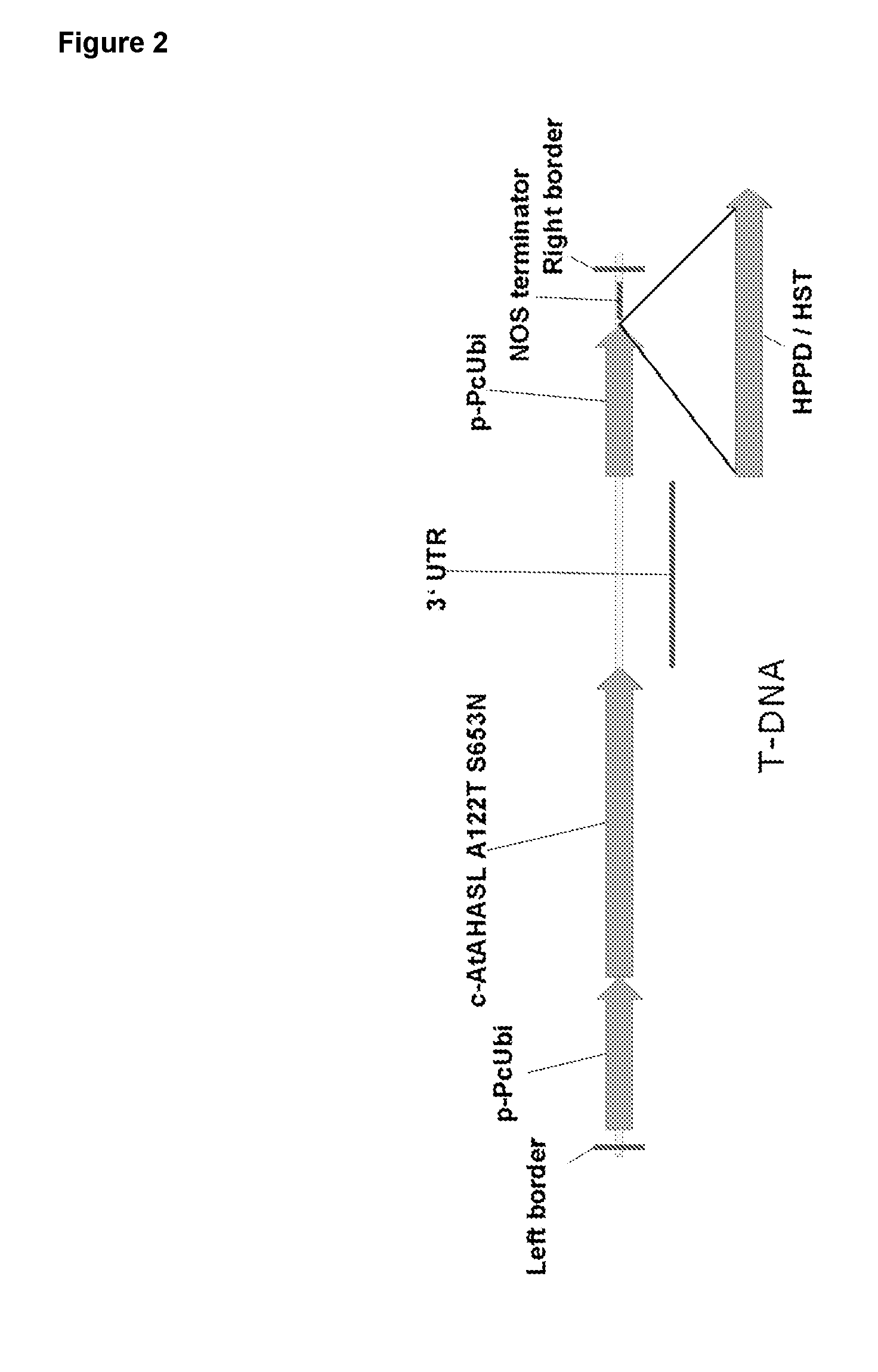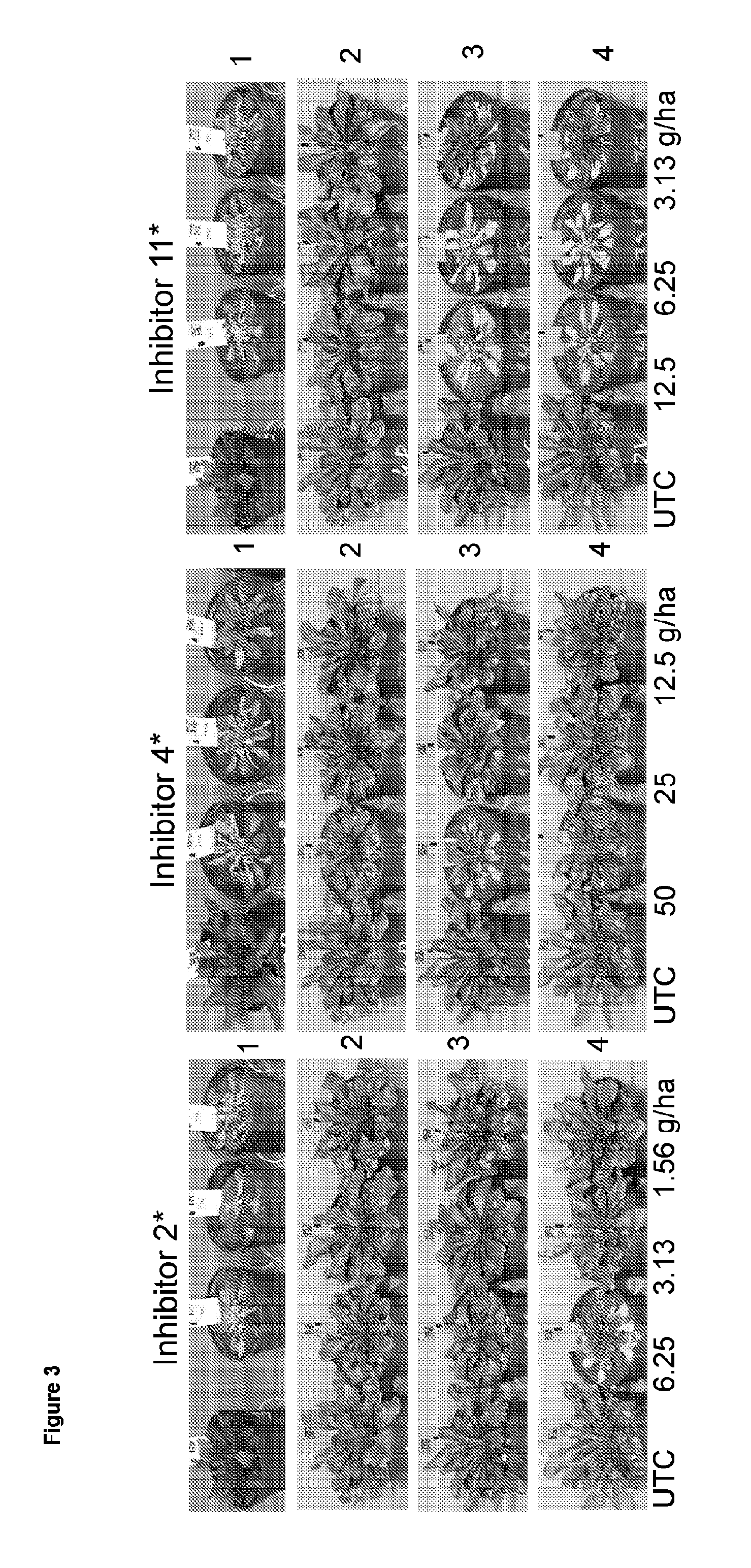Herbicide-resistant hydroxyphenylpyruvate dioxygenases
a technology of hydroxyphenylpyruvate and dioxygenase, which is applied in the direction of biocide, peptide source, fused cell, etc., can solve the problems of chloroplast synthesis and function disturbance, oxidative degradation of chlorophyll and photosynthetic membrane in growing shoot tissues, and bleaching symptoms, etc., to achieve the effect of increasing herbicide tolerance or resistan
- Summary
- Abstract
- Description
- Claims
- Application Information
AI Technical Summary
Benefits of technology
Problems solved by technology
Method used
Image
Examples
specific embodiments
[0097]Accordingly, this invention provides measures and methods to produce plants with increased herbicide tolerance or resistance.
[0098]Accordingly, the present invention provides transgenic plants showing increased tolerance or resistance to one or more herbicides as compared to the corresponding origin or the wild type plant and methods for producing such transgenic plants with increased herbicide tolerance or resistance. One or more enhanced herbicide tolerance-related phenotypes are increased in accordance with the invention by increasing or generating the activity of an HPPD enzyme.
[0099]The nucleic acid molecule of the present invention or used in accordance with the present invention, encodes a protein conferring an activity of an HPPD enzyme.
[0100]Accordingly, in one embodiment, the present invention relates to a nucleic acid molecule that encodes a polypeptide with an herbicide tolerance or resistance-increasing activity which is encoded by a nucleic acid sequence comprisi...
example 1
Sequencing and Full Length Assembly of Scenedesmus, Helianthus and Lemna HPPD Genes
[0701]Isolation of RNA and cDNA Synthesis
[0702]Leaf tissue of Scenedesmus obliquus, Helianthus annus and Lemna paucicosata were harvested, frozen and grounded in liquid nitrogen and total RNA was extracted using an Ambion RNAqueous-Midi kit (AM1911, Ambion) with the Plant RNA Isolation Aid (AM9690, Ambion) as per manufacturer's recommendation. The last elution was done with 10 ul of elution solution. To validate the quality of the extracted RNA 1 uL of the final product was run on a Bioanalyzer 2100 using the RNA 6000 Nano kit with the Plant RNA Nano method. The final solution, containing purified RNA, was stored at −80° C. until library preparation.
[0703]To identify orthologe HPPD genes of Scenedesmus obliquus (Gottingen, Germany) degenerated PCR primer are defined from conserved regions of HPPD protein alignment. Forward primers for HPPD are generated from consensus sequence S-G-L-N-S-NMN-V-L-A, rev...
example 2
Cloning of HPPD Encoding Genes
[0707]All HPPD encoding genes were synthesized by Geneart (Regensburg, Germany) or Entelechon (Regensburg, Germany) and subcloned into a modified pET24D (Novagen) expression vector resulting in N-terminally His-tagged expression constructs.
PUM
| Property | Measurement | Unit |
|---|---|---|
| Fraction | aaaaa | aaaaa |
| Fraction | aaaaa | aaaaa |
| Fraction | aaaaa | aaaaa |
Abstract
Description
Claims
Application Information
 Login to View More
Login to View More - R&D
- Intellectual Property
- Life Sciences
- Materials
- Tech Scout
- Unparalleled Data Quality
- Higher Quality Content
- 60% Fewer Hallucinations
Browse by: Latest US Patents, China's latest patents, Technical Efficacy Thesaurus, Application Domain, Technology Topic, Popular Technical Reports.
© 2025 PatSnap. All rights reserved.Legal|Privacy policy|Modern Slavery Act Transparency Statement|Sitemap|About US| Contact US: help@patsnap.com



